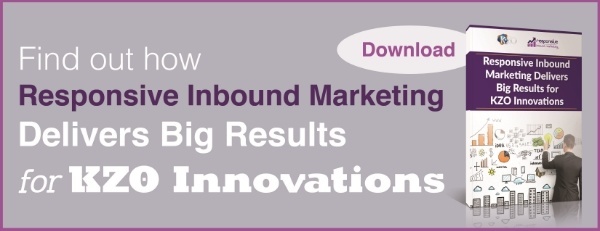What You Need To Know About Relationship Marketing
You’re on vacation and need shampoo. You walk into a grocery store and gaze upon 15 aisles stocked with colorful packages. A store clerk approaches and asks, “Can I help you find anything?” When say you’re looking for shampoo, he responds, “We’re running a sale on steaks in aisle three. Buy five pounds for $2.” You eventually find what you need but leave the store annoyed — certain you’d never return even if you had to.
Relationship marketing is new kind of marketing that focuses on retaining customers rather than merely winning their business for an initial purchase. Loyal customers are worth as much as 10 times the price of their initial purchase according to the White House Office of Consumer affairs. That means the cost of customer acquisition goes down when organizations convince a customer to stay. What’s more, loyal customers increase business referrals.
In the words of Starbucks CEO, Howard Schultz, "If people believe they share values with a company, they will stay loyal to the brand." Relationship marketing is the key to marketing in a world where manifold options create constant noise for prospective customers. It entails executing personalized campaigns that aim to encourage brand loyalty. Here’s how it’s done:
Referral Marketing Campaigns
According to a 2012 study performed by Nielsen Research, 92 percent of customers trust the recommendations of their family, friends, coworkers, and personal ties. Shocking that people trust people more than advertisements, we know! The implication when it comes to building a business is that incentivizing referrals pays off, big time. While CFOs may not initially be excited about referral programs, in the long run, they cut down the cost of customer acquisition.
Setting up a series of rewards customers will receive for each referral they send your business is an easy way to incentivize referrals. You can also reward prospective customers with a free or discounted first purchase if they encourage a second first time customer to make a purchase too.
While referral programs may seem to focus on an initial transaction, they are a part of relationship marketing because they ultimately encourage brand loyalty. When prospects and customers buy with their friends, family, and acquaintances, it conveys a communal value for your organization’s products and services.
Customer Appreciation Events
No one likes a friend who never reciprocates. Once a buyer becomes a customer, your organization should invest effort in connecting them with other like-minded customers, and in thanking them for their loyalty. You can do so with customer appreciation events, customer dinners, and even seminars or conferences.
By thanking your customers, you convey that you have their best interests in mind, and that they can trust you to continue to deliver good experiences. Furthermore, by hosting events, you enable customers to meet others who share their excitement for your brand. In so doing, you encourage the creation of a culture around your brand.
In every stage of life, we all want to feel like we belong to something. Making your customers feel like they’re part of a group builds brand loyalty and overall customer pride. Don’t just be a good friend to your customers; be a cool friend.
Prospect Engagement: Communication, Communication, Communication
When trying to reel in new customers and keep them once they make a choice to go with you, relationship marketing focuses on engagement through sexy communication. What constitutes sexy communication? You guessed it — rapid-fire, instantaneous stories, aka, social media.
By posting on social media channels regularly, you can build grow your brand’s popularity and establish a few topics that represent your brand values. Once you establish a brand voice, or a style, fans will want to keep up with your organization and see what you’re talking about. This is an opportunity to establish an emotional connection with customers that taps into their belief systems, desires, and goals.
Another effective way to engage customers and prospects once you have their email addresses, is to send them a newsletter. A newsletter that keeps prospects and customers interested will include information that aims to entertain, educate and reward your readers. Don’t make it all about you, or it’ll become a big fat advertisement, aka boring. Include current events gossip relevant to your industry, teach your prospects how to make their lives better, and make them laugh. Last but certainly not least, DON’T FORGET to mention sales events, and customer loyalty offers.
Customer Personalization
The primary strategy that brands deploy to develop relationships with their customers is through carefully executed campaigns that target specific demographics. The more specific a campaign, the more relevant to the customer’s emotional state of mind it becomes. If a prospect or customer feels like they’re being herded like cattle, they’ll consider other brands that treat them like an individual with unique needs.
Using CRM tools is a great way to personalize your digital buyers’ experiences. By tracking their online activity, you can deliver product recommendations, and event dynamic web pages that cater to their preferences, as well as factor in their past experiences so they don’t have to view content twice. CRM tools also help organizations personalize the customer experience by going so far as to track particular demographics’ social media activity to identify what trends matter to them, and then using that as inspiration for content creation.
Reward and Incentivize
Finally and most importantly, reward your best customers! Show them you have their best interest in mind and want to keep their business by offering them perks via loyalty programs. Loyalty programs work because they not only build brand loyalty, but encourage continued purchases. Be generous, and your customers will reciprocate by deepening their relationship with your brand.
Customers are People; Not Widgets
Now that you’ve viewed the most effective ways to establish a relationship with your customers, you only need one more piece of information to rock a relationship marketing strategy: despite balance sheets — yes, they matter, and yes, you need them — remember that customers are people with names and families and unique lives. When you begin to see them as the dynamic individuals they are, you can engage them in an emotional, and lasting relationship.
Want to see the analytics behind all of the "talk" and see how much you can benefit from strategy like this? Check out our case study below!


